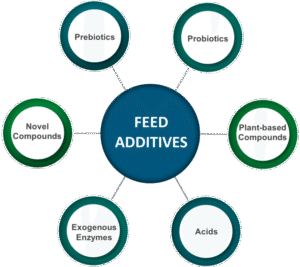The cuticle and epidermal layer of arachnids play crucial roles in providing protection, support, and enabling interaction with the environment. Let’s explore the detailed structure of the cuticle, its biochemical properties, and the epidermal layer’s structure and function.
1. Cuticle Structure and Biochemistry: The cuticle is the outermost layer of an arachnid’s body, forming a tough exoskeleton that protects and supports the organism. It consists of several layers with specific structures and biochemical compositions:
Layers of the Cuticle
1. Epicuticle:
Structure: The epicuticle is the outermost layer of the cuticle, thin and waxy, serving as the primary barrier to water loss and environmental chemicals.
Composition: It contains lipids (waxes), proteins, and sometimes pigments. The presence of waxes helps in minimizing water loss, which is vital for terrestrial arachnids to survive in dry environments.
Function: The epicuticle is highly impermeable to water and gases, protecting the arachnid from desiccation and chemical damage. It also provides a surface for sensory hairs and bristles.
2. Exocuticle:
Structure: The exocuticle lies beneath the epicuticle and is the hardened layer of the cuticle, often pigmented.
Composition: It is rich in chitin and cross-linked proteins. The proteins in this layer undergo a process called sclerotization (or tanning), where they form strong chemical bonds, making the exocuticle rigid and tough.
Function: The exocuticle provides structural strength and resistance to mechanical damage. It contributes to the cuticle’s overall hardness and rigidity, playing a significant role in protecting the arachnid against physical injury.
3. Endocuticle:
Structure: The endocuticle is the innermost layer of the cuticle and is more flexible than the exocuticle.
Composition: It consists of chitin fibers embedded in a protein matrix but lacks the extensive cross-linking seen in the exocuticle. The chitin-protein complex forms a layered structure, allowing some flexibility.
Function: The endocuticle provides elasticity and flexibility, which is essential for movement and growth. It acts as a cushion that absorbs mechanical stresses, allowing the arachnid to bend and stretch its body and appendages.
Biochemistry of the Cuticle
• Chitin: Chitin is a long-chain polymer of N-acetylglucosamine, a derivative of glucose. It is a key component of the arthropod exoskeleton, providing both strength and flexibility.
Chitin forms microfibers that are organized into layers within the cuticle, giving it structural integrity. It is similar in function to cellulose in plants.
• Proteins: The cuticle contains various proteins, including sclerotin, which undergoes sclerotization to form a rigid and hardened matrix. This process strengthens the cuticle by creating cross-links between protein molecules.
o Resilin, a highly elastic protein, may also be present, especially in joints and areas requiring flexibility. It helps in providing elasticity and resilience to the cuticle.
• Lipids and Waxes: The epicuticle contains lipid-based substances like waxes that make the cuticle waterproof. This lipid layer is crucial for preventing water loss and protecting against desiccation in terrestrial environments.
2. Epidermal Layer: Structure and Function: The epidermis lies just beneath the cuticle and is responsible for producing the components of the cuticle. It plays a vital role in growth, molting, and maintaining the exoskeleton.
Structure of the Epidermal Layer
• Epidermal Cells: The epidermis is composed of a single layer of epidermal cells that are responsible for secreting the cuticular layers above.
These cells are tightly packed and may contain specialized organelles for synthesizing proteins, chitin, and other cuticle components.
• Glandular Cells:
The epidermis also contains glandular cells that produce secretions for the cuticle, such as lubricants or enzymes that help during molting.
Some of these glands produce substances that contribute to defensive mechanisms, like venom or adhesive silks.
• Pore Canals:
Small channels called pore canals run through the cuticle from the epidermis to the surface. These canals allow the movement of waxes and other secretions from the epidermal cells to the epicuticle, where they form protective layers.
Function of the Epidermal Layer
1. Cuticle Production: The primary function of the epidermis is to synthesize and secrete the components of the cuticle. During the molting process, the epidermal cells become highly active, producing new cuticle layers to replace the old one.
The epidermis regulates the formation of each cuticular layer, ensuring proper hardening and flexibility.
2. Molting (Ecdysis): The epidermal cells play a crucial role in the molting process. Before molting, the cells produce enzymes that digest the inner layers of the old cuticle, allowing it to detach from the body.
The new cuticle is then secreted by the epidermal cells, and once the old cuticle is shed, the new one hardens through sclerotization.
3. Repair and Regeneration: The epidermis can repair damage to the cuticle by producing new cuticular material. This ability helps arachnids recover from minor injuries to their exoskeleton.
The regenerative capabilities of the epidermis are essential for maintaining the structural integrity of the exoskeleton throughout the arachnid’s life.
Thank you for reading. Don't forget to subscribe & share!









